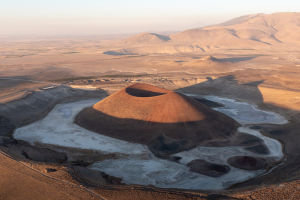Wild Beauty: Madagascar
When it comes to Madagascar, some of us may not be familiar with the place, but as soon as we mention planet B612 where the Little Prince lives, and DreamWorks' Madagascar movie series, it becomes recognizable.
Although the movie is not specifically about the country, it has brought awareness of its name to many of us.
Madagascar is an African country with a distinct artistic style that sets it apart from the rest of the continent due to its exclusive possession of the first African island and its geographical distance.
This country is truly favored by the Creator. It is home to over 80 species of lemurs, towering baobab trees, the world's largest and smallest chameleons, ancient landscapes that have existed for billions of years, and the top 10 crystal-clear beaches in the world.
Its tropical rainforests are mysterious and bizarre, showcasing rich and unique geomorphic features.
After watching DreamWorks' "Madagascar," many people wonder why the animals in the movie end up on the island. The answer is actually quite simple: Madagascar is a paradise for animals, a place that is particularly favored by the Creator.
Madagascar, an island made up of volcanic rocks, is the largest in Africa and the fourth largest in the world.
Its abundance of tourism resources, natural beauty, and vibrant flora and fauna make it feel like a place forgotten by time—an island that was one of the last to be discovered by humans.
Most of the species found here cannot be found anywhere else in the world, earning Madagascar the title of the "Eighth Continent of the World" due to its extraordinary natural diversity.
Despite being an African country, Madagascar possesses a unique style distinct from the rest of the continent due to its geographical isolation. About 160 million years ago, it separated from the African continent and has remained isolated ever since.
This extraordinary island is home to a plethora of exotic creatures. Over 80% of its wildlife is exclusive to the island, making it exceptionally rich in biodiversity.
Contrary to the depiction in the animated film, Madagascar does not boast the presence of large African animals and beasts. The island's largest predator is the fossa, a miniature version of a puma that exists solely in Madagascar and preys on lemurs for survival.
When you visit Madagascar, you will witness countless unique features. Lemurs, which are unique to the island, are more commonly found here. Additionally, you will encounter numerous distinctive and rare chameleons, insects, birds, and tortoises.
This is the epitome of a natural paradise.
The climate in Madagascar is cooler and drier during the dry season, which lasts from April to October. The peak tourist season occurs from July to August when a significant number of European tourists visit Madagascar.
It is advisable to book hotels in advance during this time, as prices tend to increase.
The best time to visit Madagascar is from September to October when the climate is mildest, characterized by predominantly sunny days, making it ideal for outdoor excursions.


